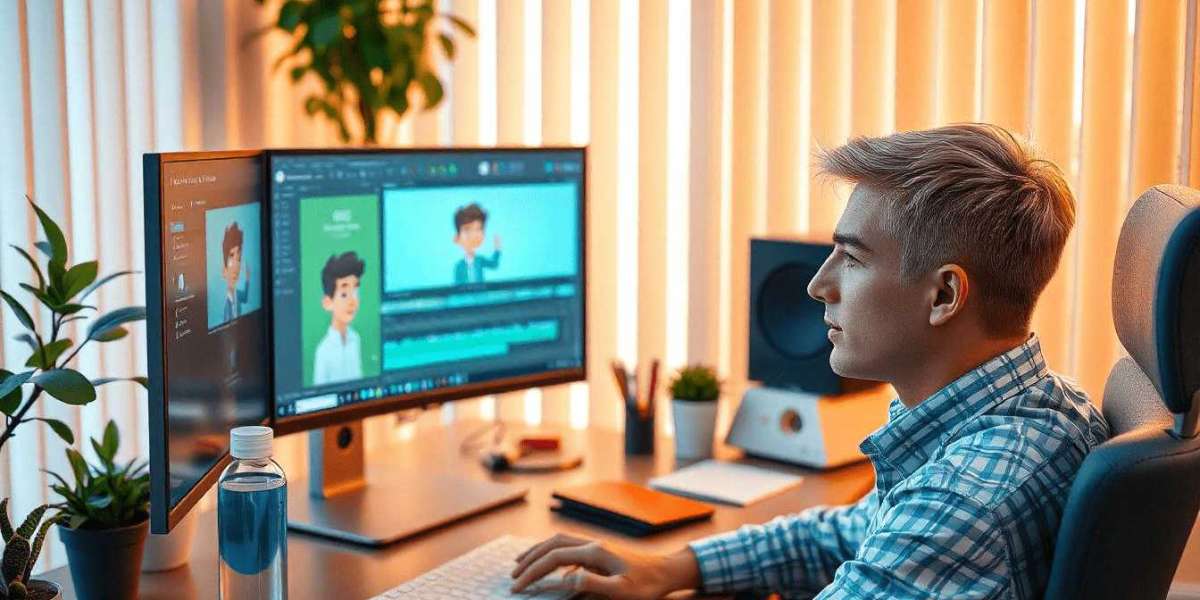The animation industry is undergoing a monumental shift. AI-driven tools can now generate motion sequences, backgrounds, and even entire character designs in minutes. Automation is making workflows faster and reducing costs. Yet, amid all these advancements, one traditional practice continues to stand tall: storyboarding.
Storyboarding—the visual planning process that maps out scenes before animation begins—remains the anchor in a storm of automation. Despite the hype surrounding generative AI and real-time rendering, the need for strong narrative structure and visual coherence hasn’t faded. In fact, it’s more crucial than ever.
The Irreplaceable Human Touch
At its core, a storyboard captures human emotion, perspective, and intention. It’s not just a sketch—it’s a blueprint of the story’s heartbeat. While AI can assist in drafting frames or suggesting angles, it cannot replicate the nuance a human artist brings when interpreting a script.
Consider emotional timing, for instance. A pause, a glance, or a subtle shift in camera angle can alter how a scene is perceived. These decisions come from human empathy and creative intuition—qualities that AI, no matter how advanced, hasn’t yet mastered.
The Age of Speed: Where Storyboarding Anchors Creativity
AI tools like RunwayML, Adobe Firefly, and NVIDIA Canvas have significantly accelerated pre-production workflows. Artists can generate concept art instantly and automate frame transitions. However, this speed can be a double-edged sword. Without a clear storyboard, creators risk jumping into production without a coherent visual roadmap, often leading to disjointed storytelling.
Storyboards act as quality control in a rushed pipeline. They allow directors, animators, and VFX teams to stay aligned, ensuring that storytelling doesn’t suffer in the race for speed. Even in fast-paced environments like episodic content creation for streaming platforms, storyboards offer a grounding framework that technology cannot replace.
Latest Trends: Storyboarding in a Hybrid Workflow
The integration of AI into the storyboarding process isn’t all competition—it’s collaboration. Studios are now adopting hybrid workflows where artists use AI to support—not replace—the creative process.
A recent update from Toon Boom announced AI-assisted panels that suggest rough compositions based on script input. Yet, these are still treated as starting points. Artists refine them manually, infusing emotion and pacing. Similarly, Blender’s Grease Pencil tool has incorporated automation, yet remains artist-dependent when it comes to storytelling finesse.
Netflix Animation and Pixar continue to emphasize strong storyboarding departments. Even with AI-enhanced tools, they require skilled storyboard artists to communicate themes, character arcs, and scene continuity—reminding us that the fundamentals haven’t changed.
Education and Skills: Still Rooted in Storytelling
Animation education is also evolving. Courses now integrate AI tools into the curriculum, but storyboarding remains foundational. Aspiring animators are taught not just how to use software, but how to think visually—how to break down a script, develop pacing, and communicate intent through sketches.
The growing creative industry in Bengaluru has embraced this approach. With production studios scaling up operations and outsourcing expanding rapidly, educational institutions have responded by offering programs that maintain the storytelling backbone. Those enrolling in an Animation course in Bengaluru are not just learning tools—they're mastering the craft of visual storytelling, a skill AI can’t replicate.
The Business Case: Why Studios Still Invest in Storyboards
Studios and producers aren’t clinging to storyboarding out of nostalgia. They’re doing it because it saves money. Fixing narrative gaps or emotional misfires in post-production is significantly more expensive than catching them in the storyboard phase.
In a time when production budgets are tightening and deadlines are shrinking, storyboarding minimizes risk. It ensures all departments—writing, animation, sound, and editing—work from a shared vision.
This is particularly relevant in VFX-heavy productions. Without a well-thought-out storyboard, VFX teams may generate sequences that look stunning but fail to support the story. Storyboards serve as a compass, directing where visual effects should amplify the narrative, not distract from it.
Psychological Connection: Storyboarding as Visual Empathy
One of the most underappreciated aspects of storyboarding is its role in building viewer empathy. The composition of each frame determines how the audience feels—where they focus, what they miss, and how they interpret character emotions.
A high-angle shot may make a character appear vulnerable. A close-up might emphasize fear. These decisions start in the storyboard, not during animation. Even AI-trained models rely on storyboarded references to learn visual cues. So ironically, the datasets fueling generative animation are built on traditional human storyboards.
News Snapshot: Why Storyboarding Still Makes Headlines
In 2025, several major studios faced backlash for AI-generated content that lacked emotional depth. One such case was an animated short that premiered at a global festival. It was created almost entirely using AI tools, but critics panned it for lacking soul and coherence.
In response, several industry veterans—including directors from DreamWorks and Laika—reaffirmed their commitment to storyboarding. They argued that technology should enhance, not erase, storytelling foundations. This industry dialogue has reignited discussions around creative authenticity and the indispensable value of storyboarding.
Looking Ahead: Storyboarding in an Automated Future
As we look to the future, storyboarding is evolving, not disappearing. Digital whiteboards, VR tools, and AI co-pilots are making the process more dynamic. Teams can now collaborate remotely, adjust scenes in real-time, and even preview sequences in VR. But these tools only enhance what is already a deeply human process.
Studios that find the right balance between technology and traditional visual planning will have the creative edge. And artists who can storyboard with clarity, empathy, and intention will continue to be in demand.
Conclusion
Even in the era of AI and automation, storyboarding remains the soul of animation. It ensures that while tools may change, the story stays intact. In growing markets like Bengaluru, where media production and education are booming, storytelling fundamentals are being taught alongside modern software. Those enrolling in a 2D animation course bengaluru aren’t just learning flashy effects—they're being trained to build scenes that serve a larger narrative, frame by frame.
Storyboarding is not just relevant; it’s resilient. And as long as storytelling exists, it will remain the unsung hero behind every powerful visual experience.











